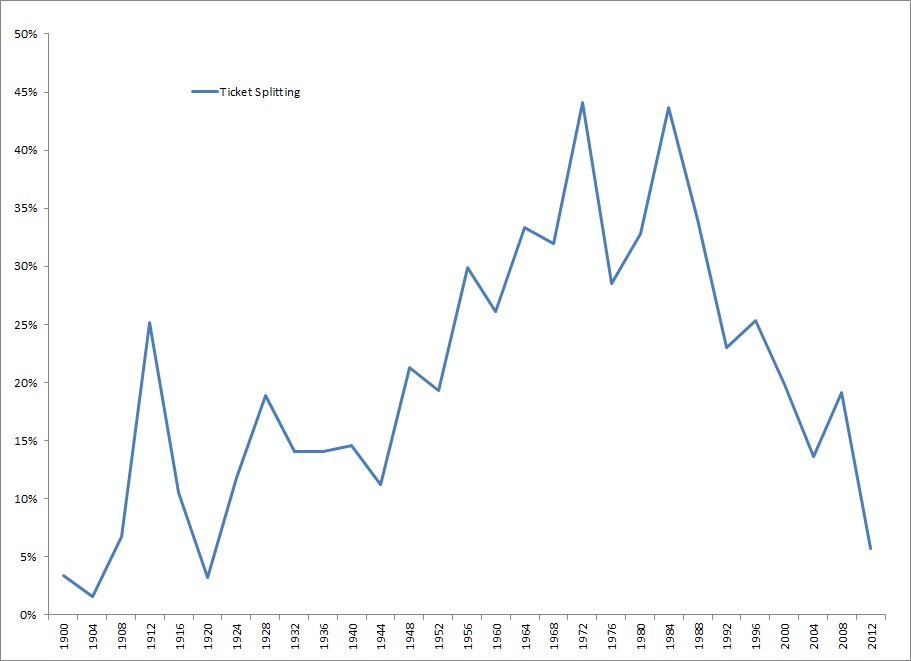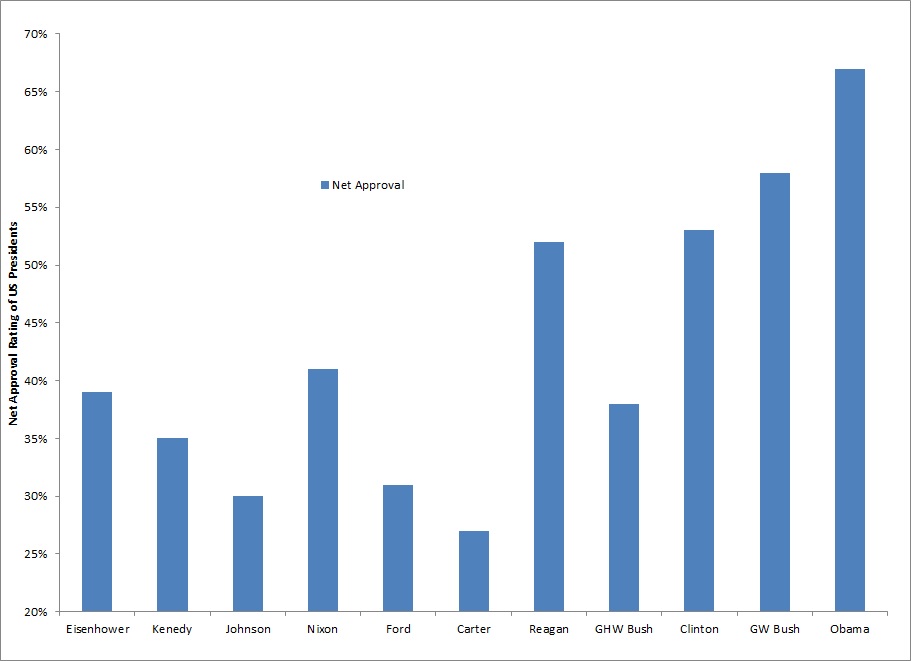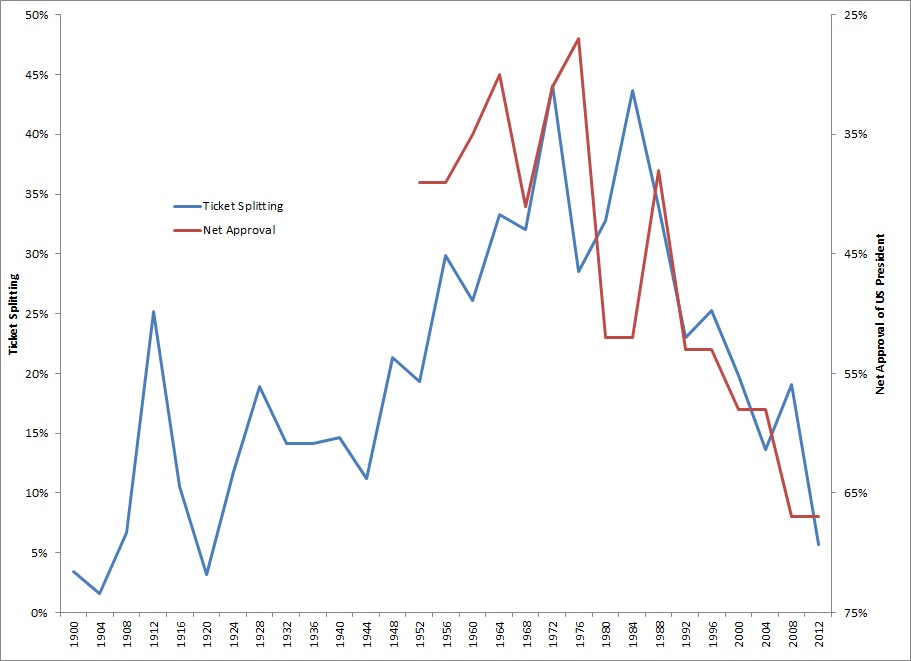Election 2016 Polarized Country not Caused by Candidates
A common theme throughout the 2016 election is that the candidates are very divisive and have created divisions in the country. In fact, the country has been becoming increasingly divided over the last generation(s) and the current candidates are more akin to symptoms than causes. On a variety of variables, the US appears to be the most polarized as any time in approximately the last century.
Ticket splitting, or voting for a presidential candidate and other political offices from different parties, has become increasingly rare. Put another way, a generation ago it was much more common for someone to vote for a Republican for XYZ and a Democrat for ABC. When people vote a ‘straight ticket’ they only vote for one particular party on a ballot. In this case, they are very much party-focused. When increasing numbers of people vote a ‘straight ticket’ instead of ‘ticket splitting’ you can assume that things are becoming polarized.
Data has been aggregated on a Congressional District level to measure the amount of ticket splitting over time.
Chart 1: Ticket Splitting in US Presidential Elections, percent of Congressional Districts that voted for different candidates for President and House, from 1900 to 2012
Source: Vital Statistics on Congress
This chart shows that the level of ticket splitting was exceptionally low in 2012, the lowest since 1920. This basically says that almost every Congressional District has a strong bias towards one party. The lower this percent goes, the worse the polarization. We can see from this chart that the polarization trend certainly did not start with Clinton and Trump in 2016, but has been gaining force for over a generation.
Another way of measuring polarization is to look at a president’s approval rating within the in-power party versus within the out-of-power party. If the president’s approval rating is approximately the same (favorable or unfavorable) within each party, we can assume that the level of polarization is low. If the approval rating is very high within the in-power party but very low within the out-of-power party, we can assume there is political polarization. A higher ‘net approval’ rating, or the in-power approval minus the out-of-power approval rating, equates to greater polarization.
Chart 2: ‘Net Approval’ Rating for US Presidents, or approval rating from in-power party members minus approval rating from out-of-power party members
Source: Pew Research
The previous chart shows a trend of increasing polarization. The members of the in-power party are increasingly approving of ‘their’ president while the the out-of-power party members are increasingly disapproving of the ‘other party’s’ president. Of course, the same individual is the president of the country, but the approval rating is increasingly being determined by political party membership.
These both are symptoms of a long term trend in political polarization and not in a short-term phenomenon produced by two difficult candidates. People have started to demonize the other party, and once this starts people stop thinking and rely on knee-jerk reactions.
Putting these two variables on the same chart shows that the underlying phenomenon is similar. Note that the Net Approval on the right axis is inverted. In the following chart, up is decreasing polarization and down is increasing polarization.
Chart 3: Ticket Splitting versus Net Approval Rating
Source: Pew Research, Vital Statistics on Congress
The good news is that it appears that we are near a low. It does not appear like things could become more polarized. A country’s ability to stay under a 5% ticket splitting threshold is doubtful and it is highly unlikely the US can sustain a Net Approval rating of the president of more than 70% for very long. In other words, this is just about as bad as we are going to get. It could unfortunately stabilize around these levels for some time, but it does not appear like it will get much worse.
Summarizing, Clinton and Trump did not produce the political or social polarization in 2016. And, the US Presidential Election, though divisive, did not produce such animosity between political parties and demographic groups. Polarization has been moving at a glacier pace for approximately four decades, so pinning these issues on the current candidates seems like a stretch. People will do much better for the country to analyze the above charts and study the true underlying causes than try to demonize who ever is sitting across the table.


